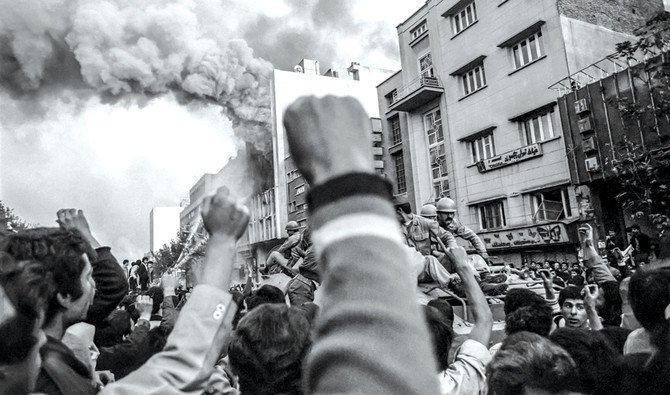How Iran fueled Islam’s Sunni-Shiite divide

The centuries-old sectarian Sunni-Shiite divide is arguably so entrenched that many — even Muslims — would be hard-placed to pinpoint the source of the largest cultural dispute in the history of Islam.
As author John McHugo pointed out in an exclusive interview with Arab News, the origins of the 1,400-year divide were “virtually unknown” in the West outside specialist academic circles until the Iranian revolution of 1979, which prompted several, varying narratives of the clash between Sunnis and Shiites. Today, the divide is frequently seen as an important aspect of the conflicts that have been ravaging Syria and Iraq over the past few years, and of the power politics playing out elsewhere in the region.
Yet McHugo feels the dispute remains widely misunderstood. “We live in a time of appalling violence across large swaths of the Arab world and many other Muslim countries. When people ask how this has come about, they often find themselves presented with an answer citing the Sunni-Shiite divide.”
This was the catalyst for the scholar of Islam to pen his latest book, “A Concise History of Sunnis and Shi’is,” in which he aims to combat the myths about the divide.
McHugo explained how the schism between the sects of Islam is more toxic today than ever before, resulting in decades of war in Middle Eastern countries including Syria, Iraq and Yemen, but said the dispute is as much political as it is religious.
McHugo said many trace the divide back to the death of the Prophet Muhammad in 632 AD. “You could argue that the divide goes back to the last hours of Prophet
Muhammad’s life and people were wondering who would take leadership after his passing,” he said. “Although it goes back that long way, I wouldn’t say there has always been conflict. If an ancient feud between Sunnis and Shiites is truly the fault line that has divided the Muslim world ever since the death of the Prophet Muhammad, why did it receive so little attention before the late 1970s?
